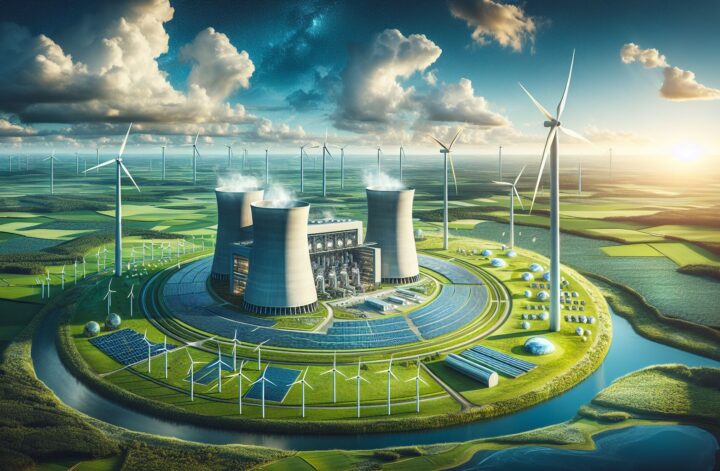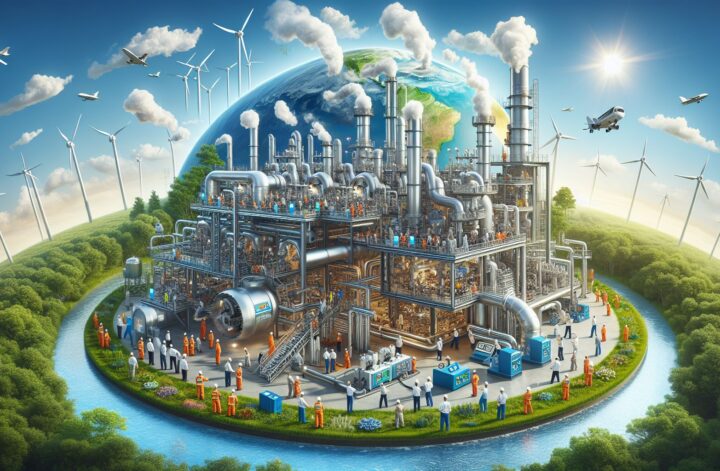
In the current era of unprecedented environmental change, concerns over our dependence on fossil fuels have ushered in a new age where renewable energy stands as a beacon for our sustainable future. This article aims to delve deep into the significance, dynamics, and prospects of renewable energy, a rapidly expanding field which promises to reshape the way we consume energy.
1. Introduction: Understanding Renewable Energy
Renewable energy harnesses the energy from sources which are naturally replenished on a human timescale. Contrary to fossil fuels, these sources – including sunlight, wind, rain, tides, waves, as well as geothermal and bioenergy – are inexhaustible and continually renewable [1]. These ‘clean’ energies expose our environment to fewer pollutants, making a substantial impact on quality of life, health, and the sustainability of our planet.
2. The Components of Renewable Energy
Renewable energy is composed of various components, each classified based on the natural resource it takes advantage of.
2.1 Solar Energy
Solar energy harnesses the radiant light and heat emitted by the sun. Solar Photovoltaic (PV) panels convert sunlight directly into electricity, playing a crucial role in the pursuit of renewable energy. In fact, the last decade has seen a 60% yearly growth rate in the solar PV installed capacity [2].
2.2 Wind Energy
Wind energy is electricity generated by wind turbines that convert the kinetic energy in wind into mechanical power. Wind power, a reliable and endless source, is one of the fastest growing renewable energy technologies.
2.3 Hydropower
Hydropower exploits the energy from running or falling water. The standard process consists in damming a river and then using the potential energy stored in the reservoir for power generation.
2.4 Bioenergy
Bioenergy refers to the energy derived from organic material—biomass—like plants and waste. This is transformed into heat, electricity or biofuels that can be used in transport.
2.5 Geothermal Energy
This lesser known source of renewable energy taps into the earth’s internal heat, captured from both the captured steam and hot water from beneath the earth’s surface in geothermal reservoirs. It can then be transformed into electricity.
3. The Promising Potential of Renewable Energy
The potential for renewable energy is immense. The International Energy Agency predicts that renewable technologies could deliver 95% of the reduction in carbon emissions needed in the energy sector by 2050 [3]. We discuss three critical areas where renewable energy has the potential to make significant contributions.
3.1 Carbon Dioxide Emission Reduction
Renewable energy technologies emit little to no greenhouse gases, which are the main contributors to climate change. This makes them critically important to reducing our carbon footprint.
3.2 Energy Security and Independence
Countries with access to, and capability for, renewable energy production can reduce their dependence on foreign energy sources. This provides not only energy security but also creates unique opportunities for social, economic and political independence.
3.3 Job Creation and Economic Development
The renewable energy industry offers new opportunities for job creation and can play a pivotal role in sustainable economic development. Globally, in 2018, about 11 million people were employed in the renewable energy sector [4].
4. Conclusion: The Renewable Revolution
The age of fossil fuels, with all its environmental hazards, is nearing its end. The sustainable, clean and abundant nature of renewable energy marks it as the energy source of the future. Though challenges remain, investment and research in renewable energy have gained momentum. As we navigate the energy transition, it is imperative that we embrace the prospects of a clean, sustainable and renewable future.
References
1. REN21 (2018) Renewables Global Status Report. Access online
2. International Renewable Energy Agency (2018) Renewable Capacity Statistics. Access online
3. International Energy Agency (2018) Sustainable Development Scenario. Access online
4. International Renewable Energy Agency (2018) Renewable Energy and Jobs. Access online




